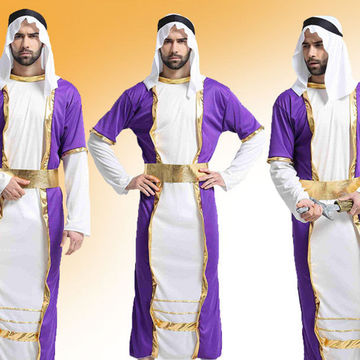Discovering the Rich Heritage of Eastern Wear Pakistan in Modern Style
Discovering the Rich Heritage of Eastern Wear Pakistan in Modern Style
Blog Article
Discover the most effective Choice of Authentic Eastern Use
Start a trip via the elaborate world of authentic Eastern wear, where social customs and sartorial style intertwine to develop a tapestry of unparalleled beauty. The attraction of Eastern clothing depends on its capability to transcend time and geography, using a peek into the rich heritage and workmanship of varied areas. As you discover the myriad design and styles, each piece holds a tale waiting to be untangled, inviting you to welcome the creativity and class that Eastern fashion envelops. Prepare to be mesmerized by the attraction of Eastern wear and submerse yourself in a globe where every garment is a testament to centuries-old traditions and splendid craftsmanship.
Background of Eastern Fashion

Today, Eastern style continues to captivate the worldwide market, with designers drawing motivation from standard clothing to develop modern-day analyses that appeal to a broad audience. The rich tapestry of Eastern fashion background offers as a testament to the imagination and workmanship of the craftsmens that have contributed to its advancement.
Sorts Of Eastern Clothing
Exploring the varied range of typical garments discovered in Eastern cultures reveals a fascinating tapestry of styles and designs that show unique histories and social identities. From the elaborate needlework of Indian sarees to the flowing shapes of Japanese robes, Eastern clothing encompasses a vast range of styles. Whether it's the luxurious materials of Persian clothing or the minimalist sophistication of Vietnamese ao dai, Eastern clothing provides an exciting glimpse into the diverse societies and traditions of the East.
Craftsmanship and Materials
An in-depth evaluation of Eastern clothes discloses the precise workmanship and beautiful materials that underpin these traditional garments. Eastern wear is renowned for its elaborate needlework, delicate handwork, and interest to information that display the skill and artistry of the artisans. From the vivid sarees of India to the flowing robes of the Middle East, each garment is a masterpiece of accuracy and devotion.
Workmanship in Eastern attire frequently involves time-honored techniques gave via generations. Artisans invest hours, often days, carefully developing detailed patterns and styles that adorn the textile. Whether it's the zardozi deal with a Pakistani shalwar kameez or the kantha sewing on a Bangladeshi saree, the level of workmanship is unmatched.
In addition, the products used in Eastern wear are thoroughly selected to ensure both top quality and authenticity. eastern wear pakistan. Fabrics like silk, cotton, chiffon, and velvet are generally made use of, each selected for its unique residential or commercial properties that enhance the last garment. Embellishments such as grains, sequins, and mirrors include a touch of prestige and luxury to these traditional sets, making them really attract attention in the globe of fashion
Popular Eastern Use Trends
Current years have experienced a rebirth in the popularity of traditional Eastern wear, with a noteworthy focus on combination designs and contemporary adjustments. One popular pattern in Eastern wear is the consolidation he said of modern components right into standard clothing, producing a distinct mix of cultural heritage and contemporary style. Designers are reimagining traditional shapes, such as the saree and salwar kameez, by infusing them with western cuts, innovative draping techniques, and unusual embellishments.

Furthermore, minimalist visual appeals and monochromatic color combinations have actually gotten traction in Eastern wear, providing an innovative and understated appearance. This change towards simplicity reflects a contemporary take on standard designs, appealing to those seeking an extra stylish and polished fashion declaration.
Tips for Designing Eastern Clothes
Incorporating modern-day components and traditional craftsmanship right into Eastern wear opens up a myriad of styling chances for style enthusiasts seeking to create culturally abundant and one-of-a-kind clothing. When styling Eastern clothing, it's important to find a balance between typical elements and contemporary trends. One pointer is to mix and match various items, such as pairing a standard stitched kurta with contemporary pants for a fusion appearance. Additionally, don't avoid trying out with lively shades and intricate patterns that are characteristic of Eastern clothing.
Accessories play a crucial duty in raising an Eastern outfit. Consider including statement precious jewelry like jhumkas or a maang tikka to boost the total look. For males, a traditional pocket square or a fashionable bandana can add a touch of sophistication to the ensemble. Take notice of shoes selections, selecting traditional mojaris or juttis for a full Eastern-inspired attire.
Lastly, self-confidence is essential when styling Eastern put on. Embrace the social heritage and craftsmanship behind each item, and wear it with pride to genuinely embody the significance of Eastern style.
Conclusion
To conclude, Eastern style supplies a distinct mix of tradition and modernity, showcasing the abundant social heritage and craftsmanship of the East. With a varied series of materials and designs, Eastern clothing captivates fashion fanatics worldwide. By exploring the background, home kinds, workmanship, and patterns of Eastern wear, people can welcome the beauty and storytelling aspects of this social clothing in their wardrobe.
The background of Eastern fashion traces back centuries, showing varied social influences and standard workmanship. Today, Eastern style continues to mesmerize the international market, with developers attracting ideas from conventional clothes to develop contemporary analyses that appeal to a vast audience. One famous pattern in Eastern wear is the incorporation of modern elements into conventional clothing, creating a distinct blend of cultural heritage and contemporary fashion.Incorporating modern aspects and conventional craftsmanship useful link into Eastern put on opens up a myriad of styling possibilities for style fanatics looking to create culturally rich and unique outfits. eastern wear pakistan.In final thought, Eastern fashion offers an unique mix of custom and modernity, showcasing the rich social heritage and workmanship of the East
Report this page